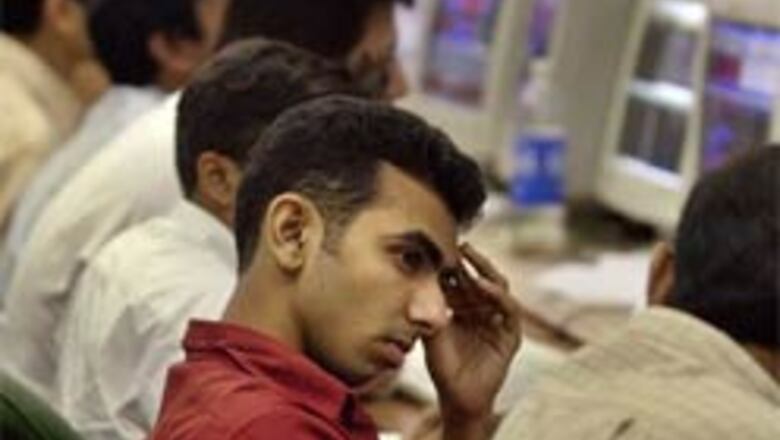
views
New Delhi: Investors are a harried lot after being drained of both money and energy with the stock market recording its biggest ever plunge.
'Fear Factor' measured by the volatility ratio of the benchmark Sensex, was at its worst barely a few days ago.
The good news for now is - a gradual improvement has been witnessed ever since the investor sentiments bottomed out, both on the wealth loss and fear gauge fronts.
When the Bombay Stock Exchange's 30-share sensitive index recorded its highest ever intra-day fall of 1,111 points on May 22 that forced a one-hour suspension of trading, the volatility ratio also surged to an all-time high level of 12.55 per cent.
What made it more traumatic for the investors was the fact that the volatility ratio had recorded its previous two record highs of 8.21 per cent and 7.31 per cent just in the previous two trading sessions on May 19 and May 18 respectively.
The market observers said that volatile market movements were triggered by jittery investor sentiments.
To add fury to these sentiments were rising interest rates in the US, meltdown in global commodity markets, especially in the metal segment, and unfavourable trends in crude oil prices.
Brokers also said that the investors are worried over market swings, while new investors are adopting a wait-and-watch policy and are unlikely to enter until the volatility comes down to reasonable levels.
The Sensex swayed more than 1,300 points in the intra-day trade before closing 457 points down at 10,481.77 on May 22.
While a whopping swing of 2,844 points has already been registered between this month's highest and lowest levels in
the intra-day trade.
However, a marked improvement was seen in the volatility the next day, when the Sensex snapped its losing streak and managed to close in the positive territory on the back of assurances from the government and regulatory authorities about the market's good health.
The volatility ratio dropped to 6.22 per cent on May 23 and a continuous fall saw it ending the week at 2.91 per cent.
However, it had remained above four per cent on May 23 and May 24.
The market analysts expect a modestly higher level of volatility to further continue in the market as a readjustment of risk portfolio is on after the recent drop in valuations.
An analysis of the recent movements in the volatility ratio shows that the recent bout of highly volatile conditions started on April 28, 2006.
At this time, the ratio had jumped to 4.49 per cent while barely missing the record high of 4.57 per cent scale in January 2005.
PAGE_BREAK
The Sensex had recorded a 490-point intra-day swing on April 28 on the back of an interim order passed by the market regulator Securities and Exchange Board of India that barred 24 operators from functioning in the market for their role in the IPO scam.
SEBI said later that it would probe the steep volatility on the Sensex, which helped keep the volatility ratio below two per cent level until May 11.
It was only after May 11 that the recent downslide began on the market and the ratio rose to 2.20 per cent.
The day coincided with the announcement of an interest rate hike by the US Federal Reserve and indications for further rise.
This triggered a high level of volatility across the world in the recent past.
Even the US market recorded its highest ever volatility in more than two years, measured by VIX or Volatility Index which is also known as 'fear gauge' among traders.
Union Finance Minister P Chidambaram said that the events in the global markets, especially movements in the commodity markets had brought sharp volatility to the stock markets in many emerging markets.
The Reserve Bank of India also tried to soothe the investors while advising the banks to provide ample liquidity to meet margin calls.
The market observers said that swings tend to become wild in emerging markets, while they are less pronounced in developed markets that have attained a significant depth over the years.
The Finance Minister has gone on record to say that while rise and fall in a market is a natural phenomenon what he is worried about is the volatility.
High level of volatility is one of the biggest fears for investors, but they need to avoid panicking and stay invested, said the market experts.




















Comments
0 comment